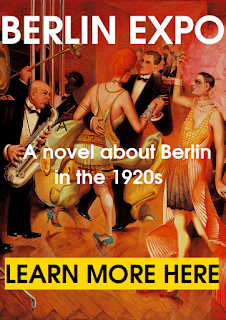All those who painted her portrait depicted her as a young woman. Hers was the pulsating energy that drove everyone around her and gave them the courage to be modern: Jawlensky, Kandinsky, Muenter, Marc, Erma Bossi. As early as 1913 Else Lasker-Schueler described her as the “Blaue Reiter-Reiterin”: Werefkin had firm grip on the artist community.
"I am woman, am devoid of any creativity. I can understand all and create nothing … I lack the words to express my ideal. I seek the person, the man, who would personify this ideal. As woman, demanding that which would give her inner world expression, I met Jawlensky … I thought I could create them in Jawlensky … A purely divine desire. Not attainable on earth." Marianne von Werefkin
Was she indulging
the genius cult of the 19th century, clinging to a bourgeois
role model? Her fate brings to mind that of sculptress GelaForster, whose artistic activities came to a halt following
her marriage to Alexander Archipenko. Or that of the painter Minna
Tube, who Max Beckmann demanded not touch a paintbrush as
long as she was married to him. It is only after about eight years
that Marianne von Werefkin, albeit secretly at first, began
to paint again and eased herself away from her misbelief.
 |
| Werefkin, by Ilja Repin, 1888 |
In 1896, Werefkin
initially moved to Munich with Jawlensky and her young maid Helene
Nesnakomoff, who was to bear Jawlensky’s son in 1902.
Werefkin rented a large double apartment in Giselastrasse
123 in Schwabing, where she forthwith hosted an influential
salon and which became a much frequented meeting point for the
cosmopolitan avant-garde.
Together with
Wassily Kandinsky, Gabriele Münter and Alexej Jawlensky, she founded
the Neue Kuenstlervereinigung München (Artist
Association Munich) in 1909, which two years later
would become the Blaue Reiter. From 1912 onwards, she becomes one of
the most renowned STURM artists. Her gallery owner became so
enamored with her painting “Herbstidyll” (Autumn idyll)
that he not only exhibited it but also turned the image into a
STURM postcard, which he then used to market his artists and his
STURM gallery.
She died in 1938 in
Switzerland and was buried according to Russian Orthodox rites.
(From an article by
Ekkehard Tanner in SchirnMag)
https://www.schirn.de/en/magazine/context/between_life_crisis_and_world_war/
 |
| M. von Werefkin, by Gabriele Münter |
 |


Surely the picture at the top of the page is not Marianne von Werefkin, although it is by Jawlensky: it's the famous 'Portrait of the dancer Alexander Sakharoff', 1909.
ReplyDeleteYou are right. It is not she and it is not by her. Thank you!
ReplyDelete